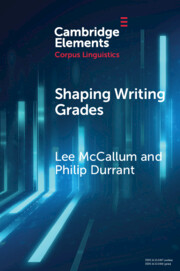Element contents
Shaping Writing Grades
Published online by Cambridge University Press: 12 July 2022
Summary
- Type
- Element
- Information
- Series: Elements in Corpus LinguisticsOnline ISBN: 9781009070461Publisher: Cambridge University PressPrint publication: 08 September 2022
References
- 3
- Cited by



